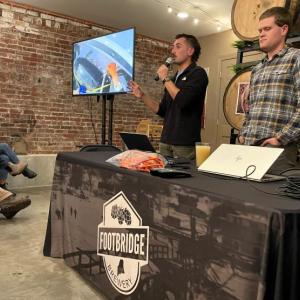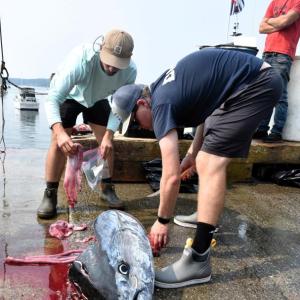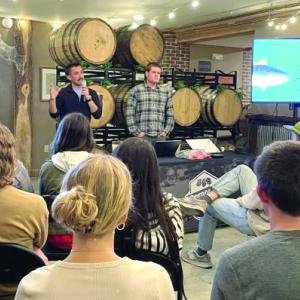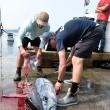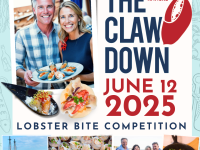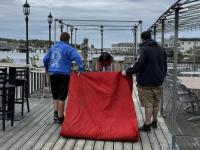Ocean on Tap offers stimulating beer and tuna pairing
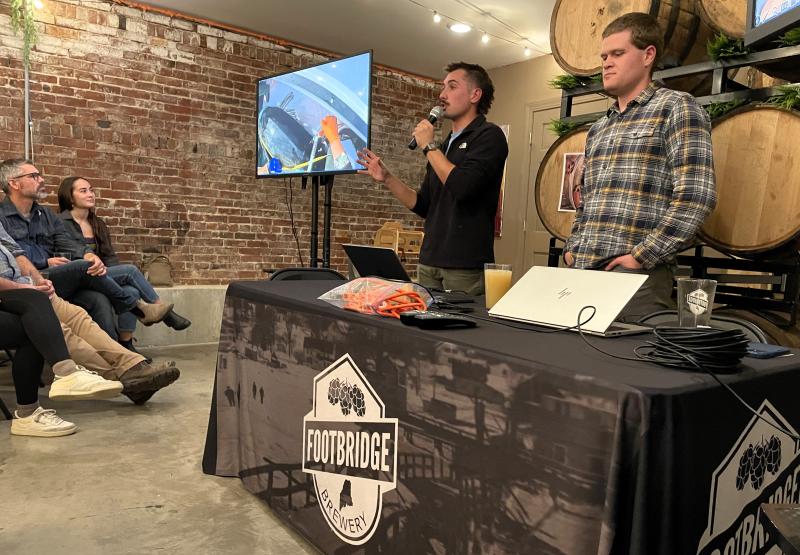 Joseph Dello Russo, left, and Blaise Jenner. FRITZ FREUDENBERGER/Boothbay Register
Joseph Dello Russo, left, and Blaise Jenner. FRITZ FREUDENBERGER/Boothbay Register
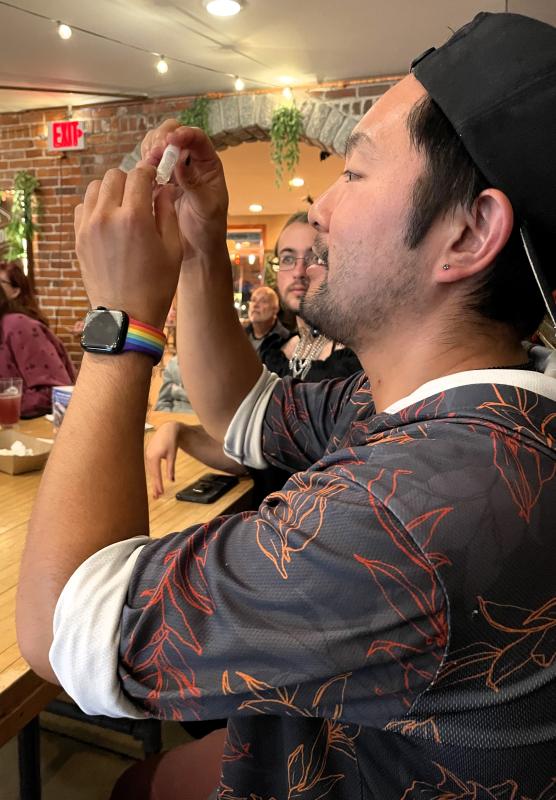 Reyn Yoshioka examines a tuna ear bone, or otolith. FRITZ FREUDENBERGER/Boothbay Register
Reyn Yoshioka examines a tuna ear bone, or otolith. FRITZ FREUDENBERGER/Boothbay Register
 Joseph Dello Russo, left, and Blaise Jenner collect samples at the 2023 Boothbay Harbor Tuna Challenge. FRITZ FREUDENBERGER/Boothbay Register
Joseph Dello Russo, left, and Blaise Jenner collect samples at the 2023 Boothbay Harbor Tuna Challenge. FRITZ FREUDENBERGER/Boothbay Register
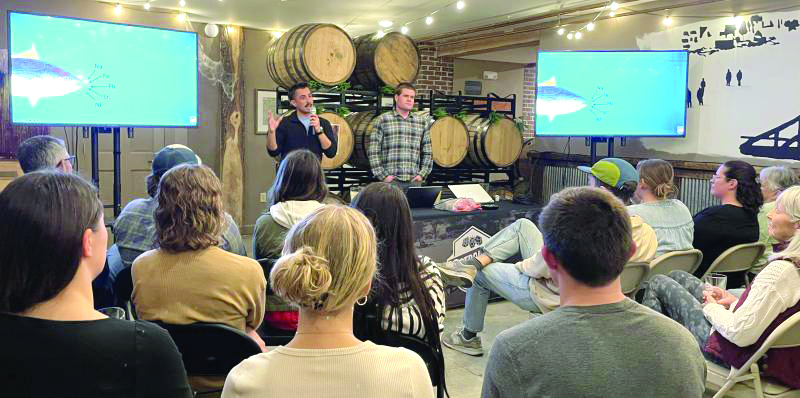
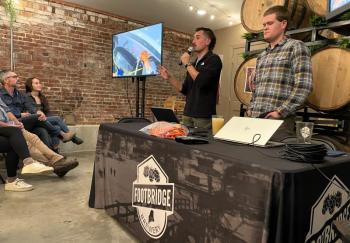 Joseph Dello Russo, left, and Blaise Jenner. FRITZ FREUDENBERGER/Boothbay Register
Joseph Dello Russo, left, and Blaise Jenner. FRITZ FREUDENBERGER/Boothbay Register
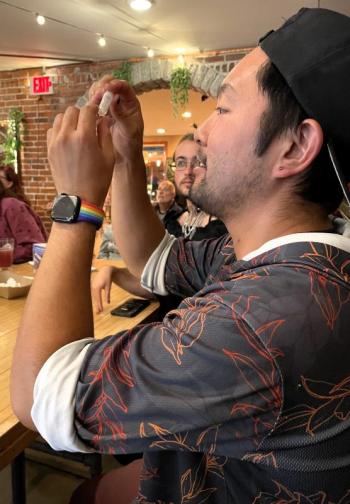 Reyn Yoshioka examines a tuna ear bone, or otolith. FRITZ FREUDENBERGER/Boothbay Register
Reyn Yoshioka examines a tuna ear bone, or otolith. FRITZ FREUDENBERGER/Boothbay Register
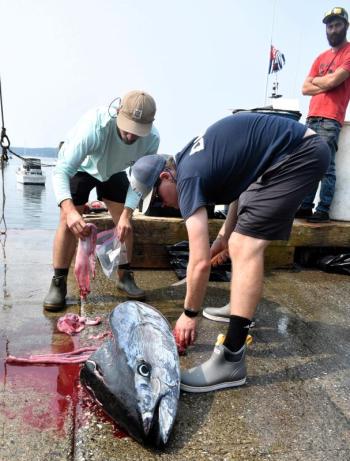 Joseph Dello Russo, left, and Blaise Jenner collect samples at the 2023 Boothbay Harbor Tuna Challenge. FRITZ FREUDENBERGER/Boothbay Register
Joseph Dello Russo, left, and Blaise Jenner collect samples at the 2023 Boothbay Harbor Tuna Challenge. FRITZ FREUDENBERGER/Boothbay Register

How long does it take to swim from the Gulf of Mexico to Norway? If you’re a tuna, about 60 days, according to Blaise Jenner and Joseph Dello Russo from UMaine's Pelagic Fisheries Lab. The graduate student researchers came to Footbridge Brewery in Boothbay Harbor Oct. 24 as part of the ongoing Ocean on Tap series to talk about tuna and how science can help inform the agencies that manage them.
Perhaps the biggest challenge for tuna research is their range. Because they can regulate their body temperatures, tuna can make themselves comfortable in numerous aquatic conditions, according to the researchers. They said tuna will migrate across the Atlantic Ocean and beyond,including in the Gulf of Maine, the Gulf of Mexico, the Mediterranean Sea, Norway and the Carribean Sea.
“They can be in any environment they want to be,” Dello Russo said. “And if anybody has ever fished for them, we also know that they're a race car and a bulldog all in one. They're incredibly powerful, really awesome species.”
Dello Russo said scientists use trackers and satelllites to study their movements. The techniqueuses a remote tracking device attached to a fish. The device comes off at a predetermined location. Once it surfaces, it can be collected and it connects with a satellite system to relay information including its location history. The researchers showed maps of data collected from such devices, and how the fish have gone halfway across the world looking for food and spawning grounds.
Because tuna can go wherever they want, tuna fisheries are managed by international governing bodies, and are divided into two stocks based on where they spawn. The eastern stock spawns in the Mediterranean Sea and the western stock spawns in the Gulf of Mexico. The scientists said around 70% of tuna come from the eastern stock.
One large goal of Pelagic Fisheries Lab is to help fisheries management agencies understand tuna populations, migrations and habits to better keep the industry healthy and sustainable. To do that, researchers sample fish caught in the Gulf of Maine, largely from tuna tournaments like the Boothbay Harbor Tuna Challenge. According to Dello Russo, the lab collected samples from over 1,600 tuna this summer and over 20,000 since the program started.
“None of the samples we collect would be possible without the fishermen up and down the coast, from Maine all the way through New England,” Jenner said. “None of it can really happen without collaborating with the industry. And it's something that they do willingly. They're not forced to ... we feel really lucky to have those relationships with people.”
The scientists take samples of a fish's anatomy to learn about its life. The inner ear bones, or otoliths, have seasonal bands that can tell age like tree rings can. Researchers can also uncover where the fish spawned by matching chemical patterns in otoliths to where they were born.
By looking into the stomachs, scientists can paint a picture of their diets. During the 2023 Boothbay Harbor Tuna Challenge, Jenner said the team collected 20 stomachs. Combined, around around 55% of the weight in all the stomachs was made up of menhaden, otherwise known as pogies. But tuna aren't too picky, and the reseachers said the lab has found plastic, sticks, fish tags, a bird, a coconut, and even an oil can in other studies.
“They’ll eat pretty much anything in their way as they are heading for that bait, menhaden, or whatever they are going for,” Jenner said.
On the subject of eating, the researchers encouraged the audience to go out and support the industry. Dello Russo said there have been times when the stock was low and tuna wasn't the best choice, but now it isn’t one of them. He said U.S.-caught Atlantic Bluefin tuna is a well-managed fishery. He recommended going out and supporting sellers who have relationships with local fishermen.
“Through these regulations and those collaborations with the fishing community and international managers, we can really confidently say that, right now, the stock is doing OK," Dello Russo said. “Might as well take advantage of it ... We're very happy to say that it's an ethical source of seafood and protein if you're able to afford it.”

